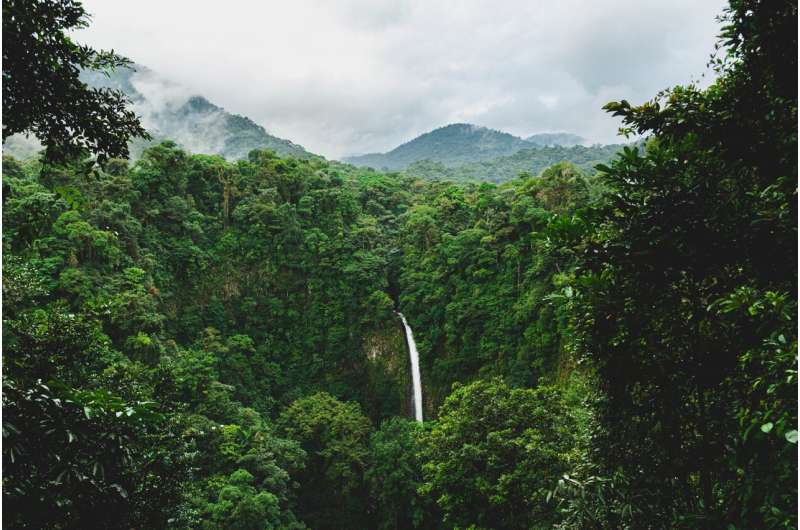This article has been reviewed according to Science X's editorial process and policies. Editors have highlighted the following attributes while ensuring the content's credibility:
fact-checked
trusted source
proofread
How plants survive droughts and extreme rainfall

Tropical ecosystems are constantly navigating between prolonged drought and extreme rainfall, but little research has been done to understand why some plants are able to survive these swings in climate.
A new technique published in the journal Echohydrology helps explain how some plants survive, potentially helping municipalities better plan which soils and plants to use in their respective climates.
"This study provides advancements in our knowledge of water uptake, and the ecohydrological functioning of tropical ecosystems," said Ricardo Sánchez-Murillo, lead investigator on the project and associate professor of earth and environmental sciences at the University of Texas.
The international research team included scientists from the University School for Advanced Studies in Pavia, Italy; University of Padova in Legnaro, Italy; Universidad Nacional de San Luis in Argentina; University of Costa Rica in San Jose, Costa Rica; University of Aberdeen in Scotland; Universidad Nacional in Heredia, Costa Rica; Area de Conservacion Guanacaste in Costa Rica; and the University of Florence in Italy.
For the study, Sánchez-Murillo and his colleagues analyzed how plants absorbed water during the dry season, looking specifically at five different ecosystems in Costa Rica. The ecosystems evaluated were evergreen and seasonal rainforests, a cloud forest, a dry forest, and Paramo (a mountain area with mostly shrubs and grasses).
At the end of the dry season, the researchers extracted soil and stem water from each ecosystem. They then analyzed the composition of the water together with precipitation, surface water and groundwater data. Although cacti are not the most abundant plant in the dry tropical forest of Costa Rica, the team found they were an excellent example of extreme plant adaption in Central America. As such, cacti specifically were examined to evaluate their water uptake.
The results showed that plants absorbed water differently depending on whether the water accompanied a recent cold front or was well mixed in the soil. In contrast to studies in more temperate ecosystems, these results showed little variation during the dry season.
"This study provides advancements in our knowledge of water uptake in tropical ecosystems and showcases the practicality of our centrifugation method for obtaining mobile water from soil and stem samples for determining isotopic composition," Sánchez-Murillo said.
More information: Ricardo Sánchez‐Murillo et al, Dry season plant water sourcing in contrasting tropical ecosystems of Costa Rica, Ecohydrology (2023). DOI: 10.1002/eco.2541
Provided by University of Texas at Arlington




















